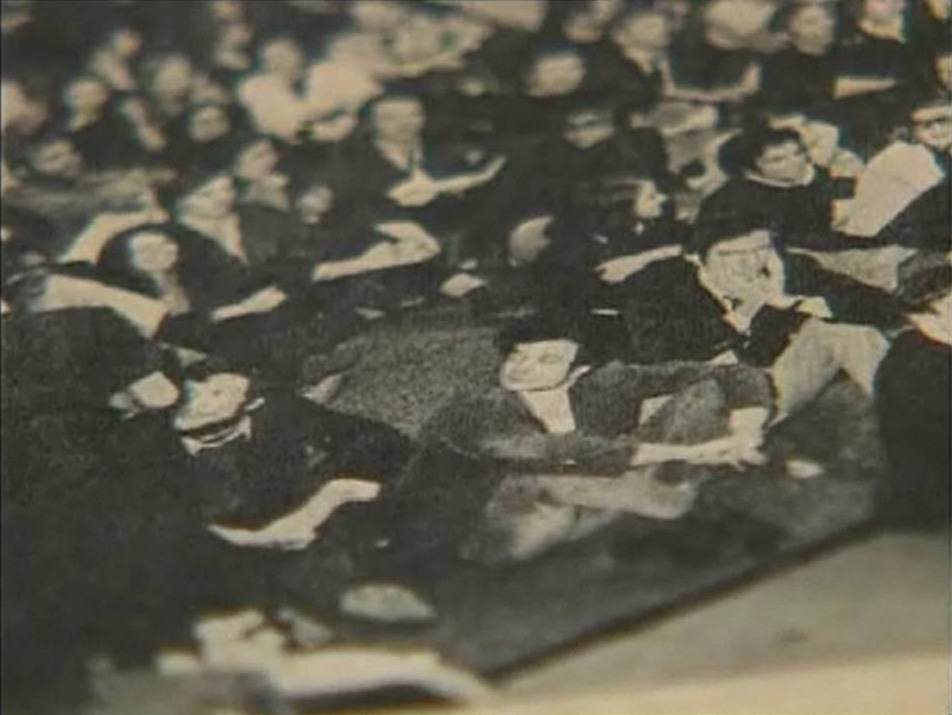
By Serge Daney
Originally published as introduction to the chapter ‘L’oeil du cinéaste en plus” (cinéma militant)’ in ‘La Rampe’ (1983)
Between 1972 and 1973, Cahiers du Cinéma engaged in a “Cultural Revolutionary Front”. Belated and rather desastrous project. The texts that the magazine published back then (the famous period “without pictures”) didn’t age very well.
Needless to say, there existed a certain type of “cinema of intervention, agitation, testimony”, or as we prefered to call it: a “militant cinema”. Wellknown filmmakers became fellow travellers, unknown militants took themselves for filmmakers.
While the French film industry, once the storm had passed, reshaped itself (1970: creation of the Path-Gaumont economic interest group; 1972: sale of UGC.; 1974: film production rights granted to channel 3; 1975: Daniel Toscan du Plantier appointed CEO of Gaumont), a retro dialogue seemed to develop between militants/filmmakers and members of the old magazine.
For the Cahiers, deep down, it was not so much about verifying the social efficacy of the militant films then about searching for a certain quality in the relation between those filming and those being filmed. The shooting of a militant film reproduced “en petit” the great fantasmatic scenario of maoism in distress, with its ”people’s camp”, its “zones liberated in some way”, its “right to speak” and its “enemies of class”. It was tempting to politicize – or at least, to moralize – some of the old acquintances: frame and out of frame, commentary and voice-over, naked speech and metalanguage, naturalisme and typage.
The mana-word of this short period was “point of view”. After a reflection on the act of filming and a return to Bazin, after the infamous polemics of “technique and ideology” – which for the last time confronted leftism in art (Comolli) with exhausted experts of the communist party (Lebel)-, the Cultural Front project proceeded to a concrete examination of the way in which some tried to put forward a political point of view in their films.
Luckely, the dice were loaded: “point of view” had at least two meanings. The first was part of the standard militant language: the point of view as the application of the political line of an organization (even micro) concerning this or that issue (even “specific” – another convenient word at the time). In that sense, it necessarily existed before the film was made, and nobody cared much about knowing how, at a certain point, it became a specific problem for the filmmaker.
The second meaning was broader. It implied the situation that a filmmaker, his team and his tools de facto occupied during a shoot, their contact with the “actors” whom they didn’t know, even (and especially) if they supported them and their just causes. “Situation” in the touristic sense of the travel guide or the military sense of the survey map. The “point of view” of a militant filmmaker on a manifestation was not the same as the one of the police or state television, who filmed a crowd from up high (to count it up, and, imaginarily, to machine-gun it); the filmmaker only captured feet, banners and cries. The temptation was great to dwell on this difference and to find it, from the outset, “political”.
With time, this “debate” on militant cinema appeared as an empty ritual, for a simple reason that has remained unnoticed: the imaginary of the ’68-ers has been nourished by theatre and not by cinema. Speeches, dogmatic recitations, points of order, voicing opinions, memories of 1789, no images. We have “taken” the Odéon theatre, not the state television HQ.
However, by way of some tradition, since the great Soviet cinema (twenties) and the cinema of the Popular Front (thirties), everyone pretended to need images while no one had the means nor the taste to produce them, only enough to learn how to “read” them (hence, eventually, the academic success of the leftist semiology). Already, in 1975, Godard and Miéville’s film essay on Palestine (Ici et Ailleurs) cut short a debate which it resumed admirably.
That being said, the problematics of the “point of view” survived very well at Cahiers, on the condition of becoming once again a question of morality. Beyond the backward surge of militant activity and the withdrawal of every notion of “Front”, we rediscovered what had nourished the magazine since forever: the morality of shooting, the effacement of the notion of actor, the emergence of the author.
More and more, we’d ask “militant” filmmakers to not manipulate their images without having watched them, without having considered them both as their thing and as a thing. To lodge themselves in the gap of this dialectics. To cheat as little as possible. To make of every film a documentary on the politics of its production conditions. Always radical regressive. That is how the author of these lines, between 1972 and 1976, would go to Canossa and end up admitting that he prefers Antonioni’s Chung Kouo to Ivens and Loridan’s Yukong.
A filmmaker as witness of his times? A filmmaker as witness of images? What does it matter if the witness is present, doesn’t stand in the way of his images, and somehow inscribes his flesh and blood in them.
——————————————————————————————————————————————————————-
Translated by Stoffel Debuysere (Please contact me if you can improve the translations).
In the context of the research project “Figures of Dissent (Cinema of Politics, Politics of Cinema)”
KASK / School of Arts